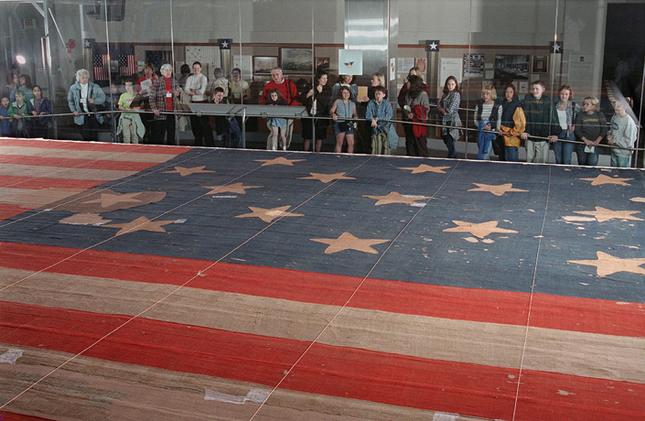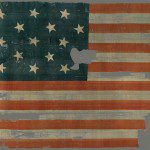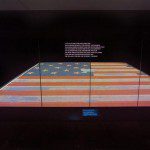When we planned the dedication of the new Star-Spangled Banner gallery at the National Museum of American History, it was important to me—as a grandson of immigrants—to include a naturalization ceremony as part of the proceedings. I could think of no better way to make the connection between the flag and American identity than to welcome people from around the world as they became American citizens.
The ceremony took place on Nov. 19, 2008, the first of several sponsored by the museum in the past six years. A powerful and moving experience, it coincided with the reopening of the museum after a $120-million, two-year renovation. Our goal was to “shine new light on American history” with exhibitions and programs that interpreted the museum’s extensive collections in historical context. We presented a new architecture, creating a space that would be more welcoming and easier to navigate than the cold, dark modernist building that opened in 1964. Now, a sun-lit atrium would serve as a public square, a setting for informal gathering, and a crossroads of ideas, information, and events, surrounded by landmark symbols of freedom and justice—the Woolworth’s lunch counter and a heroic statue of George Washington.
The new exhibition of the Star-Spangled Banner, the flag that inspired our national anthem, anchors the public square in a special gallery that is a triumph of engineering and craftsmanship. A contemporary sculpture provides a dramatic entrance to the gallery, and a multimedia exhibit provides historical context. It was a great joy to call attention to the pivotal role women have played throughout the flag’s history—Mary Pickersgill and her team of young women who sewed the flag; Georgiana Armistead Appleton who safeguarded the banner during the Civil War; Amelia Fowler who led the conservation effort for the Smithsonian in 1914; and Suzanne Thomassen-Krauss who directed the most recent conservation project.
But it is the extraordinary opportunity to see the flag up close, dramatically presented “by the dawn’s early light,” that is a truly profound experience. I have seen visitors moved to tears. School children on scheduled tours sometimes sing the national anthem. Two days after the presidential inauguration in 2009, from my office I heard the “Star-Spangled Banner” sung so beautifully that I had to investigate. It turned out that the Boys Choir of Kenya, after participating in the inauguration, now were inspired by seeing the flag exhibit. Thousands of museum visitors gave them a roaring ovation.
Whenever I conducted a tour at the museum, I always made a point to say “welcome to your National Museum of American History.” By preserving the flag we not only saved one of America’s great treasures but also preserved a fundamental principle of a democratic society: history belongs to all of us. As a public historian, I believe more than ever that history is a resource for understanding our own times. Only if we know the past and why it matters will we understand and appreciate the opportunities and responsibilities of citizenship.
Brent D. Glass, Ph.D., a Georgetowner since 2006, is Director Emeritus of the Smithsonian’s National Museum of American History, where he served as director from 2002 to 2011. An author and international consultant on museum leadership, Glass has participated in State Department public diplomacy initiatives in Egypt, Russia and Europe; served on the Flight 93 Memorial Commission; and advises museums across the country through the Kennedy Center’s DeVos Institute. His next book, a collection of essays on place and American history, will be published by Simon and Schuster in 2015.







